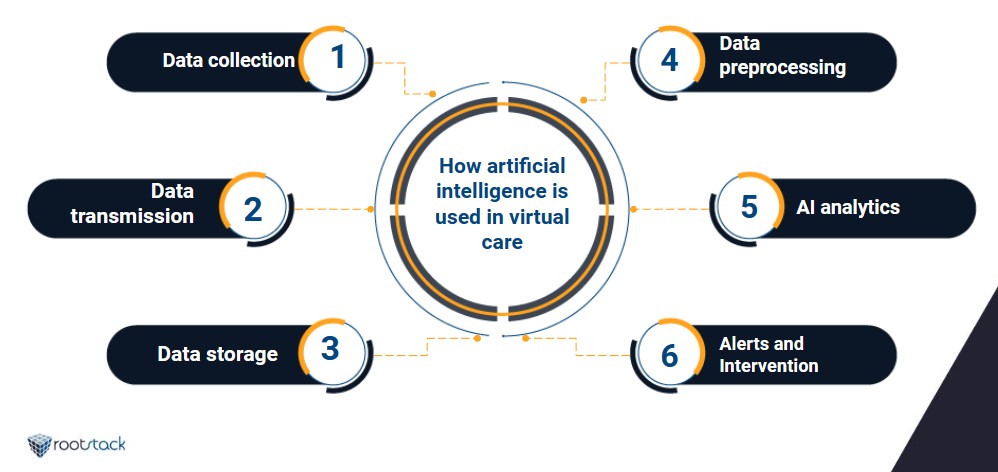Virtual Care: how to use AI to monitor the health of patients
June 14, 2023
Table of contents
Quick Access

The covid-19 pandemic irrevocably transformed various parts of human life, one of which was medicine, because many patients were unable to leave their houses to attend health centers, which is how the usage of virtual care, or virtual care, was strengthened.
According to Care.AI, "virtual care allows patients to receive medical care in ways that provide greater comfort and value. Virtual healthcare connects patients with care teams, allowing positive continuum of care."
What role does artificial intelligence play in virtual healthcare?
Because virtual healthcare is a relatively new concept in the field of medicine, numerous approaches are continually being refined in order to provide the best care to patients and any interested clients. For virtual medical care, artificial intelligence has become the most often utilized technique.
Patient monitoring, or RPM, is another term for virtual healthcare. RPM collects and analyzes patient data remotely using a variety of technologies, including artificial intelligence (AI). A general procedure for employing AI in patient health monitoring is as follows:
Data gathering
Collect pertinent health data from patients utilizing various technologies such as wearables, sensors, and mobile apps. Vital indicators such as heart rate, blood pressure, temperature, and activity levels may be included.
Transmission of data
Create a secure and dependable means for transmitting data obtained from the patient's device to a central database or cloud-based platform. This can be accomplished via wireless connections, Bluetooth, or Internet access.
Storage of data
Ensure that suitable security and privacy safeguards are in place to meet regulatory requirements by storing acquired patient data in an organized fashion.

Preprocessing of data
Remove noise, outliers, and inconsistencies from obtained data by cleaning and preprocessing it. This stage tries to improve the data's quality and dependability for subsequent analysis.
Analytics powered by AI
Analyze patient data using AI algorithms and methodologies. This can include methods such as machine learning, deep learning, or predictive modeling.
- Anomaly Detection: Teach AI models to detect odd patterns or abnormalities in patient data that could suggest potential health issues or crises.
- Predictive Analytics: Using AI models, forecast prospective health outcomes such as the likelihood of illness aggravation or the risk of complications based on past data.
- Trend Analysis: Examine long-term trends in patient data for patterns, changes, or deviations from the norm that may necessitate medical intervention.
- Decision Support: Create AI systems that can make recommendations or send alerts to healthcare providers based on patient data analysis.
Intervention and Alerts
When substantial deviations or critical circumstances are discovered, configure the AI system to generate alerts or notifications for healthcare personnel. These alerts can be given via notifications, emails, or straight into the workflow of the healthcare professional.
Medical assistance
Health experts assess alerts generated by the system, analyze patient data, and take necessary action, such as contacting the patient, modifying prescription doses, organizing visits, or giving remote counseling.
Learning that is ongoing
As more data becomes accessible and healthcare professionals step in, AI models should be updated and improved on a regular basis. Over time, this process enhances the system's accuracy and efficiency.
Last words
It should be noted that using AI for patient health monitoring necessitates careful consideration of ethical, privacy, and regulatory considerations. Following applicable criteria and securing patient consent are critical steps in protecting data privacy and trust.
Furthermore, health professionals must be included in the interpretation and decision-making process. Artificial intelligence (AI) should be viewed as a tool to assist healthcare providers rather than a replacement for human expertise and clinical judgment.
We recommend you on video
Related Blogs


How to integrate UiPath RPA with a database

Magento Development Services for the Healthcare Industry
Best Practices for Hiring a Drupal Developer

5 steps of UiPath RPA implementation

